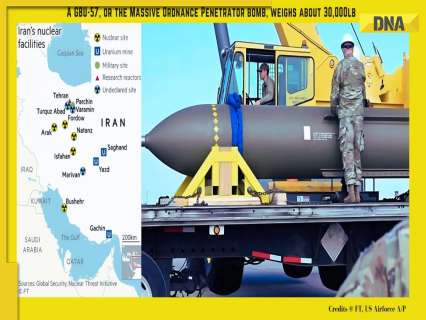
Some hardliners in Israel are still discussing whether their air force should launch a strike in response to the 180 ballistic missiles fired by Tehran into Israel on October 1st
Image source: FT, US Airforce, A/P
Analysts suggest that without backing from the US, the Israeli air force may find it difficult to carry out a successful operation. When asked on Wednesday, October 2, whether he would back an Israeli attack on Iran’s nuclear sites, US President Joe Biden firmly responded, “No.”
Some hardliners in Israel are still discussing whether their air force should launch a strike in response to the 180 ballistic missiles fired by Tehran into Israel on October 1st.
Analysts say that without US backing, an Israeli air strike on Iran’s nuclear sites would be very risky and would, at most, only slow down Iran’s nuclear program instead of completely stopping it.
What makes an Israeli operation challenging?
The first challenge is the distance. Israel is over a thousand miles (more than 1,600 kilometres) away from Iran’s primary nuclear facilities. To reach these sites, Israeli planes would need to fly through the airspace of several countries, including Saudi Arabia, Jordan, Iraq, Syria, and possibly Turkey.
Another challenge is fuel. According to a report from the US Congressional Research Service, a round trip to the targets would consume all of Israel’s aerial refuelling resources, leaving little to no room for mistakes.
The third challenge is Iran’s air defence. Iran’s major nuclear facilities are well-protected, so Israeli bombers would require protection from fighter jets during the operation.
According to the CRS report (Congressional Research Service),this would necessitate a strike group of around 100 aircraft, which is nearly one-third of Israel’s 340 combat-ready planes.
How secure are Iran’s nuclear facilities?
Israel faces a major challenge in dismantling or destroying Iran’s two primary nuclear enrichment sites.
Iran’s major fuel-enrichment facility at Natanz is buried deep underground, while the second-largest site at Fordow is built into a mountain. Destroying them would require weapons capable of penetrating several metres of rock and reinforced concrete before exploding.
Israel used bunker-buster bombs, including 2,000lb GBU-31 bombs, which its air force dropped on four buildings in Beirut on September 27, killing Hezbollah leader Hassan Nasrallah.
However, Israeli reports indicated that 80 bombs were used in that strike, and it’s doubtful that a similar attack would be enough to destroy Iran’s more heavily fortified nuclear sites.
Experts believe that the only conventional weapon likely capable of doing the job is the GBU-57A/B Massive Ordnance Penetrator (MOP), according to the Financial Times.This massive, precision-guided bomb is around 6 metres long, weighs 30,000 pounds, and can penetrate 60 metres of earth before exploding, according to the U.S. military.
Has Israel created its own bunker-buster bombs?
It’s uncertain if Israel has this capability. Some former U.S. officials have often recommended that Washington provide them.
Ehud Eilam, a former researcher at Israel’s Ministry of Defence, stated that even if Israel were able to get the MOP, its F-15, F-16, and F-35 fighter jets wouldn’t be able to carry it, according to reports from the Financial Times.
In theory, Israel could try using one of its C-130J Hercules transport planes to drop a MOP bomb through its cargo doors, a method called a “ramp drop.” However, the MOP isn’t designed to be delivered this way.
What other options does Israel have?
Israeli jets could target the air intakes and other infrastructure at the nuclear sites to disable them. This could interfere with the precision needed for the centrifuges, which are used to enrich uranium, but it wouldn’t completely destroy them.
Another option is sabotage. In 2021, a power outage or breakdown—likely caused by a deliberate explosion—hit Natanz’s internal power system, which supplied electricity to the underground centrifuges.
In 2010, the U.S. and Israel reportedly slowed down Iran’s nuclear program using the Stuxnet computer virus. However, these attacks were not able to stop the program permanently.
According to experts Darya Dolzikova and Matthew Savill from the Royal United Services Institute, significantly damaging Iran’s key facilities would need substantial support from the U.S., or even direct involvement. However, even with this level of intervention, there’s no guarantee the facilities would be completely destroyed, as reported by the Financial Times.
(The author of this article is an Aerospace & Defence Analyst based in Bengaluru. He is also Director of ADD Engineering Components, India, Pvt. Ltd, a subsidiary of ADD Engineering GmbH, Germany)
(Disclaimer: The views expressed above are the author’s own and do not reflect those of DNA)
